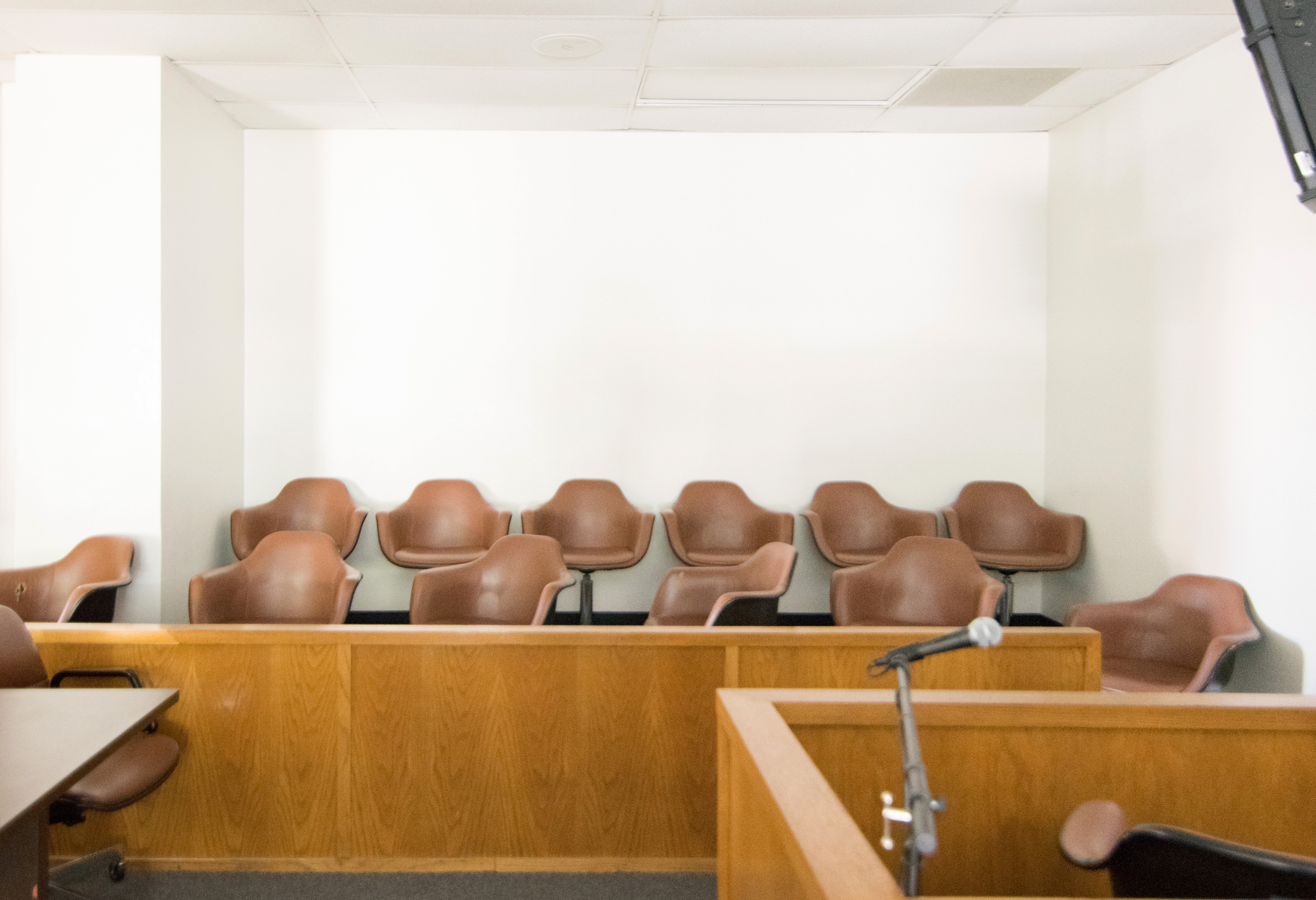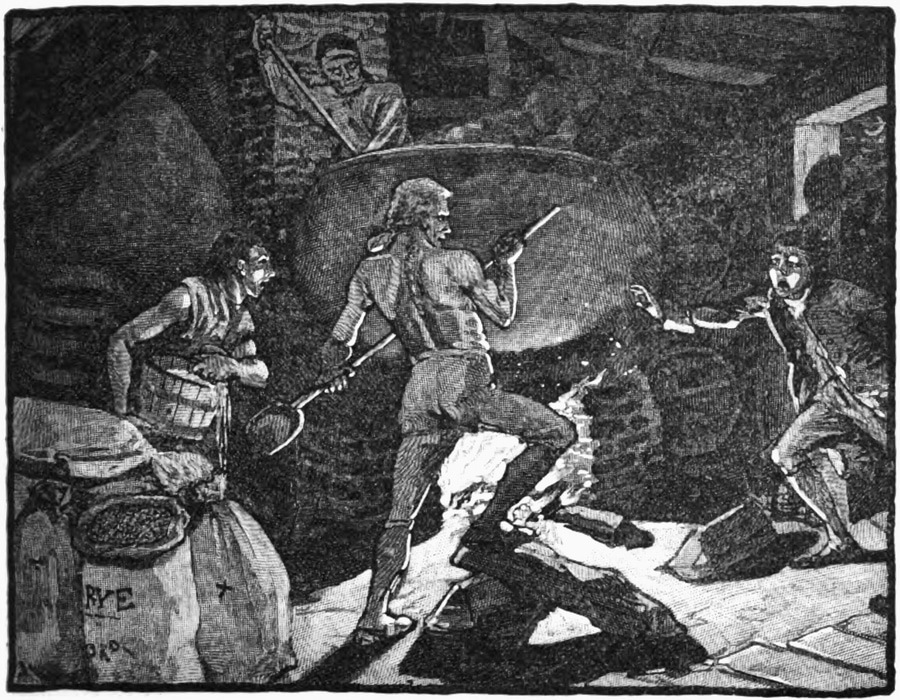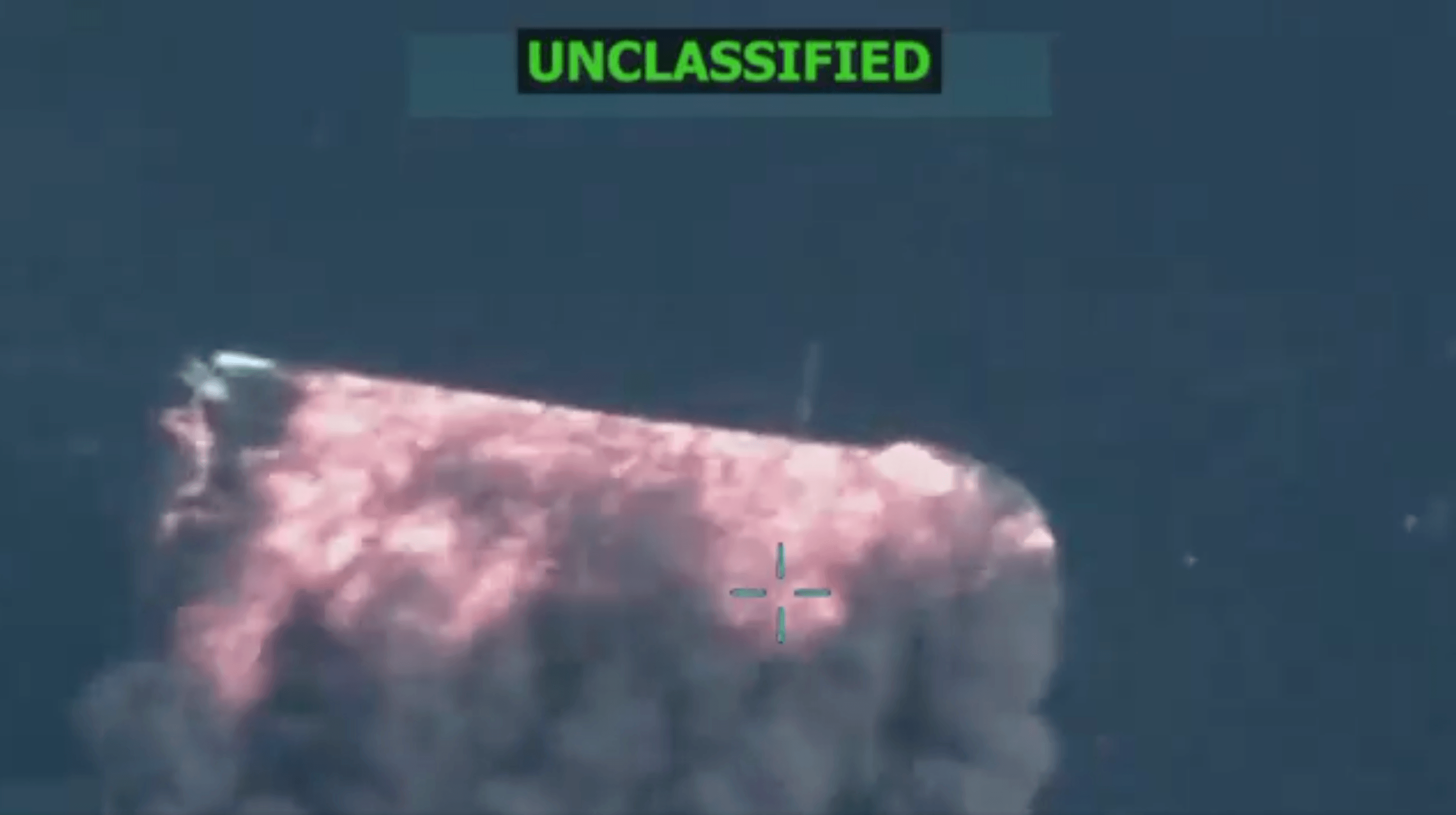Could the Special Counsel Challenge Judge Cannon’s Jury Instructions Before They’re Delivered?
Though rarely tried, prosecutors have successfully challenged proposed jury instructions by mandamus actions—at least after the jury was sworn in.

Published by The Lawfare Institute
in Cooperation With

After U.S. District Judge Aileen Cannon issued an unusual order on March 18, concerning prospective jury instructions in former Pres. Donald Trump’s classified documents case, some observers wondered if the government has any means of challenging jury instructions before they are delivered. Let’s explore that question. To make a long story short: there is a path, but it’s not easy.
The order that triggered the inquiries was one that Judge Cannon, of the Southern District of Florida, issued four days after a hearing in Fort Pierce at which she had heard arguments on two of Trump’s seven motions to dismiss. The order asked the parties to “engage with” two prospective jury instructions relating to the term “unauthorized possession,” an element of the crime of “willful retention” of national defense information under 18 U.S.C. Section 793(e), which is the offense charged in the first 32 counts of the indictment. Many observers were particularly alarmed by the second of her two proposed instructions, which appeared to require the jury to find that Trump, by the mere act of removing the documents to his home at the end of his term, had exercised unreviewable discretion to designate them as “personal” under the Presidential Records Act. That was so, the instruction effectively said, even if the documents did not remotely fit the definition of “personal” provided in that act. Furthermore, since the instruction related to the definition of “unauthorized possession” in Section 793(e), it appeared to be saying that Trump had authority to possess the charged documents—thus inviting or requiring jurors to acquit. Her other proposed instruction was less shocking but still quite controversial; it called for the jury to decide whether the classified documents in question were “personal” under the PRA. In the government’s view, these highly classified documents could not have been personal as a matter of law and, furthermore, their status under the PRA was wholly irrelevant to whether Trump’s possession was “unauthorized,” which was a matter determined by the terms of Executive Order 13526.
There is no question that Judge Cannon’s order of March 18 is not itself reviewable by an appellate court, as it rendered no decision on anything. It merely invited the parties to brief and react to Judge Cannon’s proposals by April 2.
Still, the order was sufficiently provocative that I looked into the hypothetical question of whether, if she eventually did commit to delivering such an instruction, the government could challenge it before it was delivered. Such a remedy might be essential, because double jeopardy bars the government from taking an appeal from a jury’s acquittal. Similarly, the government cannot appeal a judge’s directed verdict of acquittal if it is issued prior to submitting the case to the jury. (If a jury convicts and the judge later, on a post-verdict motion, overturns the verdict and orders an acquittal, such an order can be appealed.)
After interviewing several lawyers and performing some rudimentary independent research, I found six instances in which the government challenged yet to be delivered jury instructions by means of a petition for a writ of mandamus. In four of those instances, the petition succeeded. In two challenges—one successful, one not—the government brought the action after the jury had already been sworn in. (If readers know of other precedents, please alert me to them at roger.parloff@lawfaremedia.org.)
At the same time, it should be stressed that all the successful challenges were spurred by truly extraordinary situations—as any successful mandamus action must be. Additionally, in some cases the government was able to bring these actions as a result of unusual procedural postures that might not repeat themselves with the Trump prosecution in Florida. Finally, none of the petitions I came across were filed with the U.S. Court of Appeals for the Eleventh Circuit, the federal appellate court whose jurisdiction embraces Florida.
Rather, two cases arose in the Second Circuit, from prosecutions in Manhattan, while four came from the Third Circuit, and related to prosecutions in New Jersey or Pennsylvania. Two of the Third Circuit cases were handed down the same month and involved, sadly, the same veteran district judge who, then 89, had begun issuing a “pattern of unreasonable and largely unexplained rulings,” as one of the panels put it.
Let’s begin with the Third Circuit line of cases. They kick off with United States v. Wexler, decided in 1994. Victor Wexler was a stock broker charged with major federal tax crimes in the District of New Jersey. Shortly before trial, in response to motions in limine by both sides seeking to clarify which defenses would be permitted, U.S. District Judge John Bissell ruled that he would give the jury an instruction on the deduction of interest payments from “sham transactions” that, in the government’s view, was contrary to “well-settled” law. The error would “severely prejudice” the prosecution of Wexler, the government claimed, as well as that of other tax fraud defendants.
The government asked for a stay so that it could seek appellate review from the Third Circuit. Judge Bissell denied it, but the Third Circuit granted one.
While the government can, by statute, take interlocutory appeals from dismissals of charges or from orders suppressing or excluding evidence, it cannot appeal an adverse order relating to jury instructions. So the government sought review by writ of mandamus, a common law remedy federal courts are authorized to grant under the All Writs Act, at 28 U.S.C. Section 1651.
Today, the controlling U.S. Supreme Court precedent on the showing necessary to prevail on a mandamus petition is Cheney v. United States, decided in 2004. It requires (a) a showing of clear error; (b) the lack of an adequate, alternative remedy; and (c) irreparable injury. Courts often use terms like “drastic,” “extraordinary,” or “exceptional” to describe the circumstances that warrant writs of mandamus. Eleventh Circuit precedents use comparable language.
The Third Circuit granted the prosecution’s petition in Wexler, writing:
We find in this case that the government has no alternative avenue of relief. . . . For double-jeopardy reasons, no appeal will be possible once trial begins. The government will not be able to interrupt the trial by filing an appeal or a renewed petition for mandamus when the district judge commences to give the erroneous instruction. And if — as the government anticipates, and Wexler does not contest — jury deliberations guided by the erroneous instruction end in an acquittal, the injury to the government will be irremediable. . . . We find that the adoption of a clearly erroneous jury instruction that entails a high probability of failure of a prosecution — a failure the government could not then seek to remedy by appeal or otherwise — constitutes the kind of extraordinary situation in which we are empowered to issue the writ of mandamus.
As an aside, I highlight that this court assumed that, apparently for logistical reasons, “no appeal [would be] possible once trial [began].” As we’ll see, at least two such petitions have been litigated in the Second Circuit, including one successfully. Still, the Wexler panel was certainly correct that mandamus during trial is impractical, fraught, and rare.
If the special counsel’s office ever does see a need to challenge one of Judge Cannon’s instructions, it will doubtless cite the helpful language from Wexler above. Nevertheless, in 2006, another Third Circuit panel stressed that Wexler was reserved for truly extraordinary circumstances. That later case, United States v. Arthur Farnsworth, involved another tax prosecution. Again, the government feared that the trial judge’s aberrant instruction would render a conviction impossible. This time, however, the Third Circuit denied the petition.
In Farnsworth, three days before trial, U.S. District Judge John Padova of the Eastern District of Pennsylvania mentioned that he might deliver the contested charge. He made his final decision the day trial was to begin. By then, a jury had been selected, but not sworn. The government filed a petition for a writ of mandamus and asked the trial judge for a stay, which Judge Padova granted. The judge then discharged the jury that had been selected.
Although the appellate panel agreed with the government that “the weight of authority” favored the government’s view, it found that, given the “general lack of clarity in this area of the law,” the judge’s ruling was not “clearly erroneous.”
This case is therefore unlike Wexler, where the Government appealed a proposed jury instruction that conflicted with “the established law of this circuit” as well as “the dominant line of precedent” following decisions by the Supreme Court and another circuit.
One other aspect of Farnsworth may be worth highlighting. In this case, the government—in addition to seeking the extraordinary remedy of mandamus—also claimed that it was entitled to appeal as of right under 28 U.S.C. Section 3731. It theorized that Judge Padova, by giving an erroneous instruction that would, for all practical purposes, doom the prosecution, had effectively dismissed the charges. Dismissals are appealable under Section 3731.
While the Third Circuit rejected this argument on the facts in Farnsworth, it’s an argument that the special counsel’s office might reprise with some force in Trump’s case. What gives the contention added weight here is that Judge Cannon herself, a few hours after the hearing on March 14, issued an order denying “without prejudice” one of Trump’s motion to dismiss. She wrote that, “rather than prematurely decide now whether application of 18 U.S.C. Section 793(e) in these circumstances yields unsalvageable vagueness . . ., the Court elects to deny the motion without prejudice, to be raised as appropriate in connection with jury-instruction briefing and/or other appropriate motions.” Four days later she issued the order proposing the jury instruction that seemed to all but direct the jury to acquit.
Since Judge Cannon herself seemed to view her jury instruction as an alternative to dismissing the counts outright, the special counsel could argue that her instruction should be seen as the equivalent of dismissal, and appeal as of right should be available.
So far as I can tell, the only remaining post-Farnsworth petitions to challenge undelivered jury instructions in the Third Circuit were both truly exceptional situations—and unfortunate ones. These were United States v. Brunson and United States v. Higdon, both decided in March 2011. Each involved a mandamus petition granted to overturn instructions proposed by U.S. District Judge John Fullam of the Eastern District of Pennsylvania, who was then 89.
Harold Sidney Brunson had been charged with a string of seven robberies. In his case, Fullam made a series of “grave errors,” according to the panel. One of these was that, on his own, he ordered each of the closely-linked robberies to be tried separately. The first trial resulted in a conviction. Then, in the second trial—over the objection of prosecutors—Judge Fullam refused to instruct the jury on all the elements of the crimes charged. Though Brunson was charged with “robbery” and “robbery with a firearm,” the judge failed to define “robbery” in his instructions. The second trial also ended in conviction.
Before the third trial began—having had ample notice of what to expect—prosecutors filed a motion in limine, asking Judge Fullam to provide jury instructions on all elements of the crimes charged. When the judge refused, they sought a writ of mandamus.
The procedural posture of United States v. Higdon was analogous. Joemen Higdon, a previously convicted felon, was charged with possessing a firearm affecting interstate commerce. Among other errors, Judge Fullam refused again—over the objections of both the prosecutors and the defense—to instruct the jurors on all the elements of the offense. After a day of deliberation, the jury reported that it was deadlocked. Judge Fullam then asked the parties if they would consider accepting a “majority vote” in lieu of a unanimous verdict. Both sides declined, given that unanimous verdicts have long been constitutionally required in federal criminal trials. (Unanimous verdicts weren’t then required in state trials, but are today.) The trial ended in a hung jury.
Before a jury was selected for Higdon’s retrial, the government filed a motion in limine, again seeking assurances that, among other things, Judge Fullam would instruct the jurors on all elements of the offense. When he declined, they filed a petition for mandamus.
On these extraordinary facts, both panels granted the petitions. Higdon’s wrote:
The resulting situation is as unfortunate as it is regrettable. We noted at the outset that Judge Fullam is a very experienced and hard working jurist and he has devoted decades of service to the federal bench. However, neither this court, nor any other court, can tolerate a situation where a judge decides to follow his/her own custom and concepts of justice rather than the precedent of the applicable appellate court or the United States Supreme Court. Ours is a nation of laws, not judges.
Each panel then exercised rarely flexed judicial muscles to reassign the case to a new judge. Judge Fullam stepped down a month later. He died in 2018.
Now let’s turn to the two Second Circuit cases. They are particularly unusual because both were brought during trial—after the jury was sworn. The swearing in of a jury is a Rubicon moment, because that’s when double jeopardy attaches. One can’t discharge the jury after that point without, well, jeopardizing the whole prosecution. (In a bench trial, double jeopardy attaches when the first witness is sworn.)
The first case is United States v. Coonan, decided in 1988. This case involved a prosecution of a violent gang from Manhattan’s Hell’s Kitchen, known as the Westies, under the Racketeer Influenced and Corrupt Organizations Act (RICO). The trial of eight defendants for multiple crimes—including eight murders—began in October 1987 before U.S. District Judge Whitman Knapp. In late January 1988, after three months of trial and with the trial’s evidentiary phase coming to a close, Judge Knapp circulated proposed jury instructions. He decided to omit the standard instruction requiring the jury to make a finding as to whether each defendant participated in the affairs of a racketeering enterprise through a pattern of racketeering activity—defined as the commission of two racketeering acts within ten years. Instead, he would just ask the jury to make specific findings about racketeering acts from which he would “mathematically” determine whether a pattern had been found as to each defendant. Given the appalling violence in the case, he feared jurors might artificially find two racketeering acts per defendant if they realized that that was essential to convicting.
On Feb. 1, 1988—with summations set to start on Feb. 8 and the jury charge to be delivered thereafter—the government filed a petition for mandamus. The Second Circuit scheduled oral argument for Feb. 5. Immediately after argument, the panel denied the motion by a 2-1 vote. A week later, it released its written decision.
The majority, who believed the unusual instruction was well intended, said they could not “say that Judge Knapp so abused his discretion as to warrant mandamus.” But even as it denied relief, it hinted that Judge Knapp should at least tweak his proposed instructions in certain specified ways. It’s unclear, from the written record, if Judge Knapp ultimately did so.
That brings us to the most unusual case of all—the only unambiguously successful mandamus petition brought after a jury was sworn.
This was United States v. Pabon-Cruz, in which the government brought a mandamus petition in 2002.
The defendant had just turned 18 when he committed the acts that led to his indictment. He was charged with one count of advertising to distribute or receive images of child pornography and one count of receiving or distributing such images. The first charge—but, crucially, not the second—carried a mandatory minimum sentence of ten years in prison. (The mandatory minimum for that offense, 18 U.S.C. 2251(d), has since been increased to fifteen years.)
The defense counsel thought that, in light of the defendant’s youth, the jury might show compassion by rendering a compromise verdict—that is, acquitting on one count and convicting on the other. But the lawyer feared the jury might mistakenly assume that the first count (advertising) was the less serious count and, therefore, convict on that one. In fact, of course—and quite counterintuitively—that count carried the much more severe penalty: the mandatory minimum term. Accordingly, before trial started, Pabon-Cruz’s counsel asked Judge Gerard Lynch to give a highly unusual instruction, informing the jurors that (a) the first charge was the more serious of the two and (b) that it carried a mandatory minimum term of ten years.
The government protested that the request went “directly against controlling Second Circuit authority,” which held that judges were not supposed to instruct juries about the penalties defendants face if they are convicted, according to the Second Circuit’s later description of the events. Yet the judge commented that the sentencing inconsistencies between the two counts were wide and irrational, the Second Circuit ruling recounts. Even if the defendant had actually abused children, he would not have been subject to such a severe mandatory minimum, Judge Lynch observed at a hearing. “This is without question the worst case of my judicial career,” he said.
The judge did not make his final decision until well after the jury trial began. At a charging conference a few days before the instructions were due to be delivered, he decided to give the defense counsel’s requested charge.
The government then filed a motion for an emergency stay and a writ of mandamus from the Second Circuit. The appeals court granted the stay the next day and, with nearly unheard-of celerity, set oral arguments for 2 p.m. that same day. A day later, it rendered its decision. In a 133-word order it granted mandamus, finding that Judge Lynch’s instruction had been “a clear abuse of discretion,” citing Coonan and Wexler, discussed above.
Judge Lynch dutifully deleted the contested instructions from his charge. The jury convicted on both counts, and Lynch sentenced Pabon-Cruz to the mandatory minimum ten years in prison.
Ironically, on appeal after conviction, a different panel of the Second Circuit vacated the sentence and remanded for resentencing. It found that an anomaly in the statute’s legislative path to enactment—unknown to either the parties or the court at the time of the mandamus proceeding—permitted Judge Lynch to impose a fine in lieu of the mandatory minimum term.
Taken as a whole, these precedents suggest that, if push comes to shove, prosecutors do have avenues to challenge highly aberrational jury instructions prior to their being delivered. At least two such petitions have been brought after a jury had been sworn in, and one of those was granted. At the same time, these cases have usually succeeded where binding precedent barred the specific step the district judge in question took. The fact that there are no cases in the 11th Circuit—or, indeed, anywhere—about the interaction between the PRA and the Espionage Act, might pose a hurdle for a mandamus challenge to a proposed jury instruction.
Still, mandamus is a drastic remedy reserved for extraordinary circumstances. And that’s exactly what the government may be facing soon in Florida.


.jpg?sfvrsn=8253205e_5)


